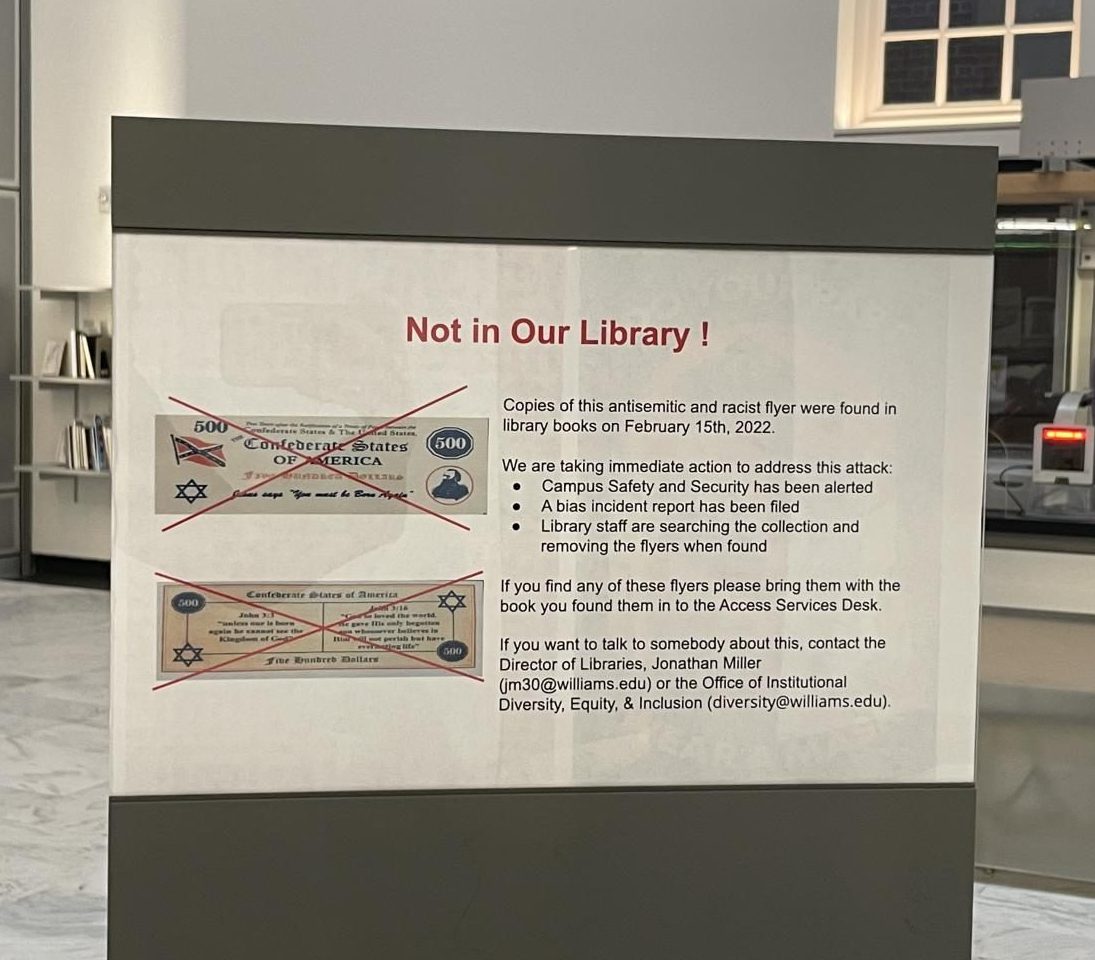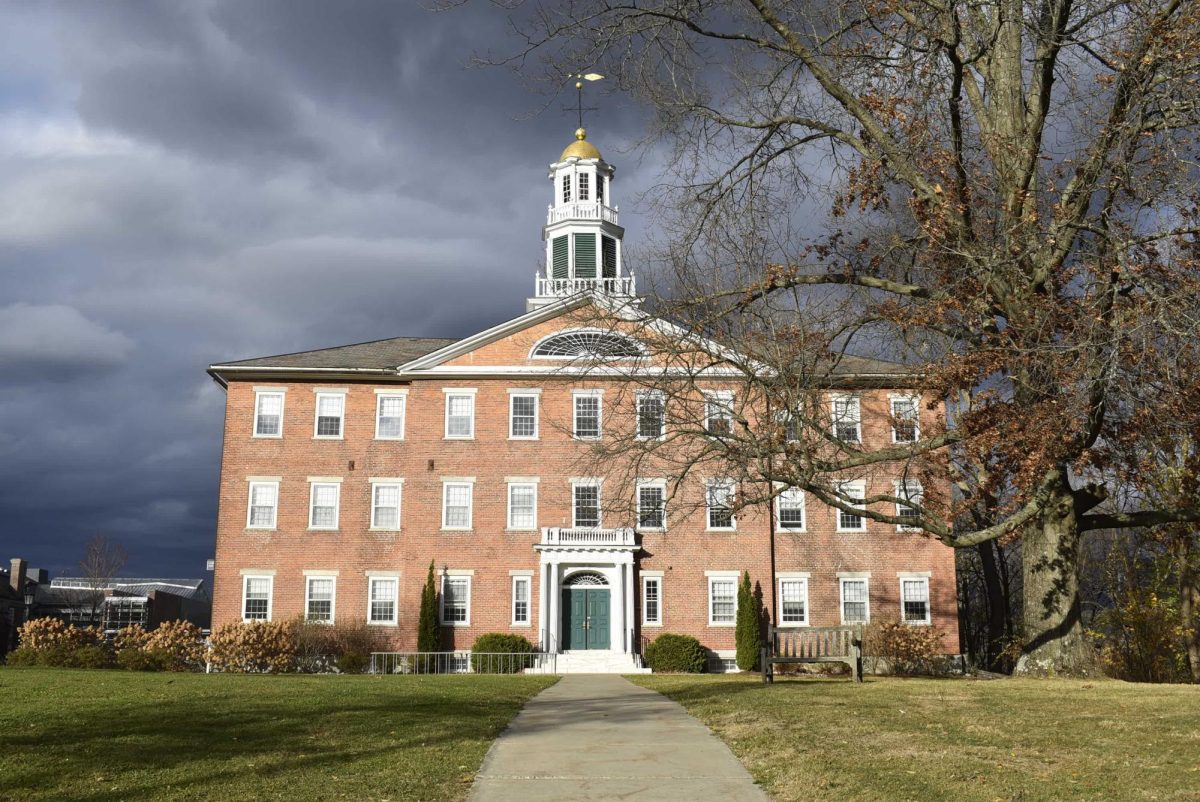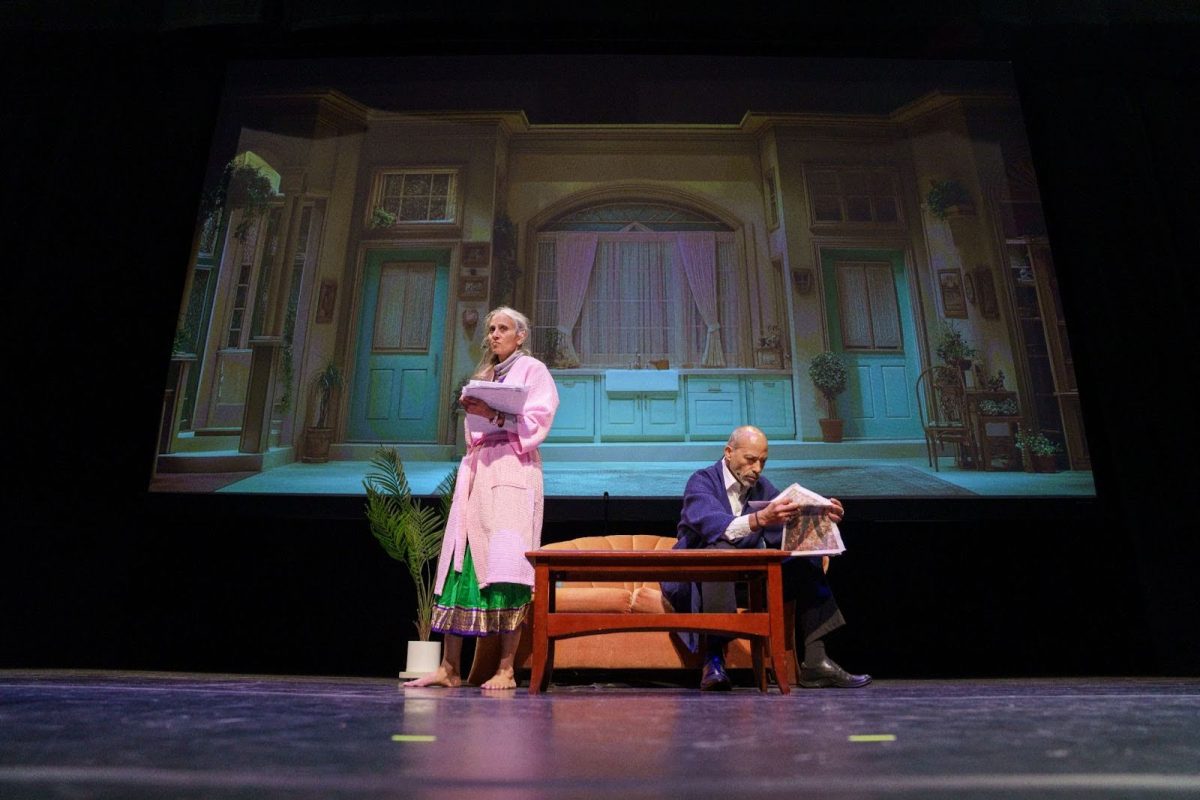Antisemitic, racist flyers found in books in Sawyer
February 23, 2022

Copies of an antisemitic and racist flyer were found in history books in Sawyer Library on Feb. 15. After consulting the Libraries leadership team as well as Campus Safety Services (CSS) and the Office of Institutional Diversity, Equity, and Inclusion (OIDEI), Director of Libraries Jonathan Miller posted a sign in the Sawyer Library entrance condemning the flyers, which were made to look like Confederate States of America currency, and asking members of the College community to bring them to the library’s Access Services Desk if found.
The flyers depict a Confederate flag, a Star of David, and a profile of Confederate General Thomas “Stonewall” Jackson on the front and have Bible verses printed on the back. Miller said a library staff member found them between pages of books in the section dedicated to German history from 1933-45 — the era of Germany’s Third Reich and the Holocaust.
“They’re not very coherent,” Miller said of the flyers. “Frankly, you kind of have to be embedded in this world [to understand them].”
The flyers are similar to ones found in Sawyer in the summer of 2018, according to Miller. The College later identified the person who put those flyers inside the books as someone not connected with the College or the larger Williamstown community.
“Back in 2018, we looked through this area [for the flyers], but it’s possible that we missed this area of shelves,” he said. The library staff has not found flyers in any of the shelves they can confirm were already searched in 2018, according to Miller, but if they do, it could serve as proof of an ongoing problem in which more flyers continue to be placed in library books. “It’s possible that somebody has come in at some point more recently and has placed them in there,” Miller said.
Last Tuesday, the same staff member also found two copies of a similar flyer to the ones pictured, which may have served as an attempt to convert Jews to Christianity, Miller believes. After the staff member turned in these flyers, Miller submitted a bias incident report to the OIDEI and contacted CSS.
In the fall of 2017 and spring of 2018, Jewish student Molly Berenbaum ’21 found similar — but not identical — antisemitic and racist flyers in books about the Holocaust that she had checked out from Sawyer. The first time she found one was Sept. 13, 2017 — her first full week of classes as a first-year student. “Had it been later in my college career, when I knew more and was more confident, I would have filed a bias report at the Davis Center and talked to Rabbi Seth [Wax, the Jewish Chaplain at the College],” Berenbaum said. “But at that point, I didn’t really know anyone. I just turned [the books] in at the desk and shyly suggested that they go through the [section of] books, and I told them the second time that it was the second time that it had happened and left it at that.”
Berenbaum stressed that these flyers could harm multiple students of many different identities, as they are antisemitic and racist. “I don’t think we should lose sight of either [harm],” she said.
After the 2018 incident, the Davis Center sent an email to the campus community on July 13, 2018, inviting students, faculty, and staff to a “community space [that] afternoon … in response to these harmful sentiments” in the Jenness Conference Room in the Davis Center.
In response to the flyers found in 2018, the College also funded the creation of a zine collection — which can be found on the third floor of Sawyer — through a Toward Inclusion, Diversity, and Equity (TIDE) grant. “The zine collection is meant as a way to affirm underrepresented identities,” the zine collection’s homepage reads.
The sign condemning the flyers placed in the entrance to Sawyer is a part of the library’s objective to be more visible in its response to the flyers this time. “[In 2018,] we didn’t want to increase the harm to people by publicizing [it], but we’ve come to [realize] that, while that potential exists, keeping these things quiet can be harming in and of themselves,” Miller said.
Berenbaum said she is glad that the College is taking a more visible approach to reacting to the flyers. “Given that there have been multiple instances of these specific flyers being found, it seems like this is a good moment, that they’re trying to get ahead of the issue,” she said.
Sawyer Library required swipe access for entry through most of the pandemic, but reopened to the public on Aug. 21, 2021. “Anyone within the Williams community or beyond the Williams community could be responsible for placing the flyers there,” Miller said.
Flyers identical to the ones found at the College in 2018 were also found in books in the Saratoga Springs Library, near Skidmore College, in September 2017 as well as in the Calvin Coolidge Library at Castleton University in Castleton, Vt. in 2018.
In 2018, Miller connected with library directors at other colleges and learned that similar flyers were discovered at Skidmore, Bates College, Whitman College, and Washington and Lee University. “This is not unique to Williams,” he said. “The people who do this want to communicate with people in higher education and they choose this strange way of doing it.”
“Even now, when we’re still wearing masks and everything — even when it’s not particularly comfortable, people still seek out the library,” Miller said. “It’s a little icky that people want to challenge that with these exclusionary materials. The staff feel the same way. They’re keen to remove these [flyers] and they’re upset to have the building be associated with this [incident].”







